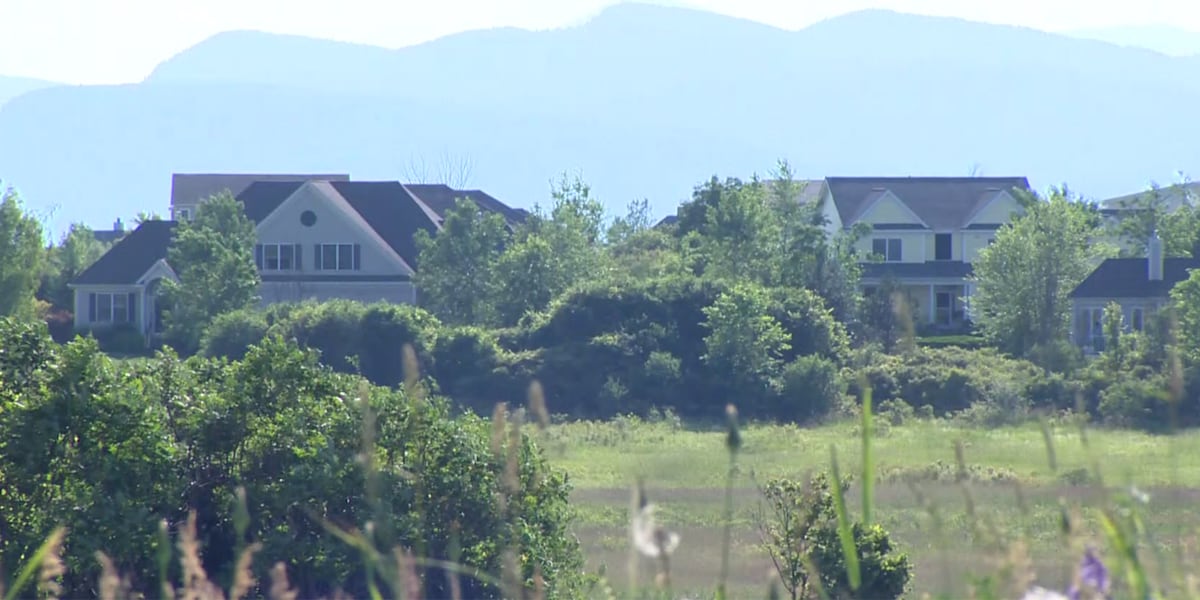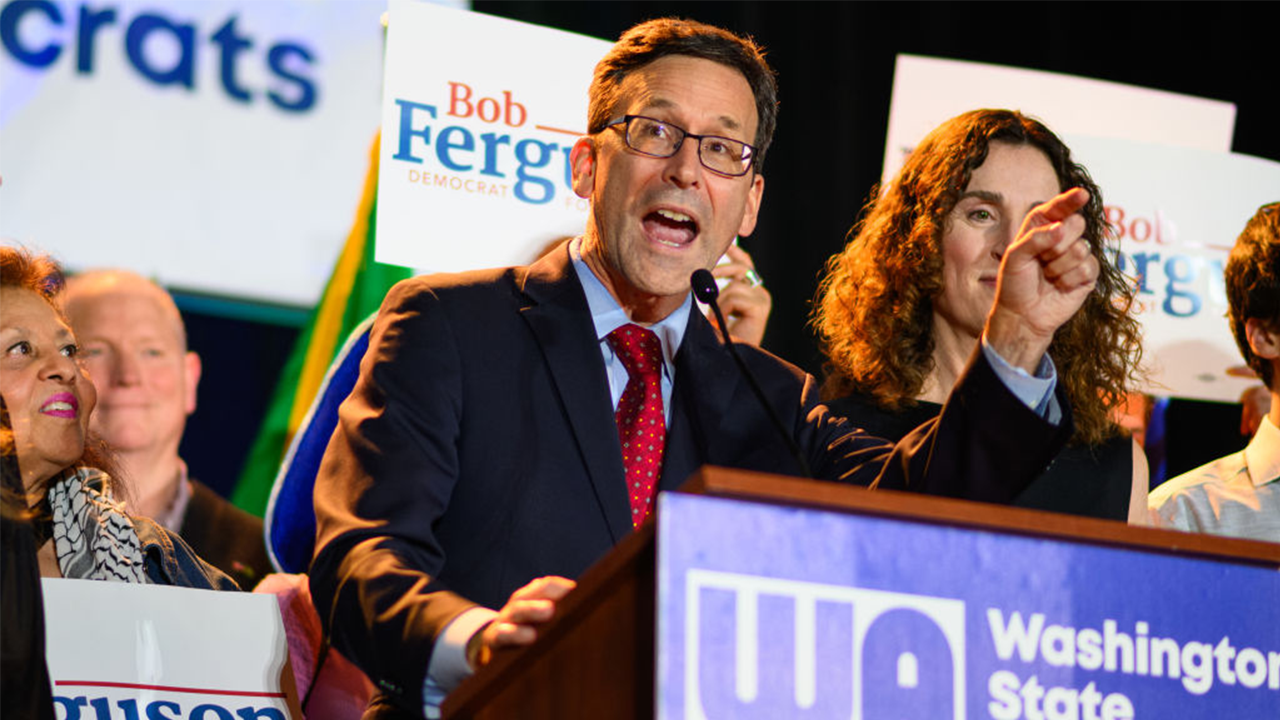World
As Russians fight for Ukraine, Kyiv is faced with a new dilemma
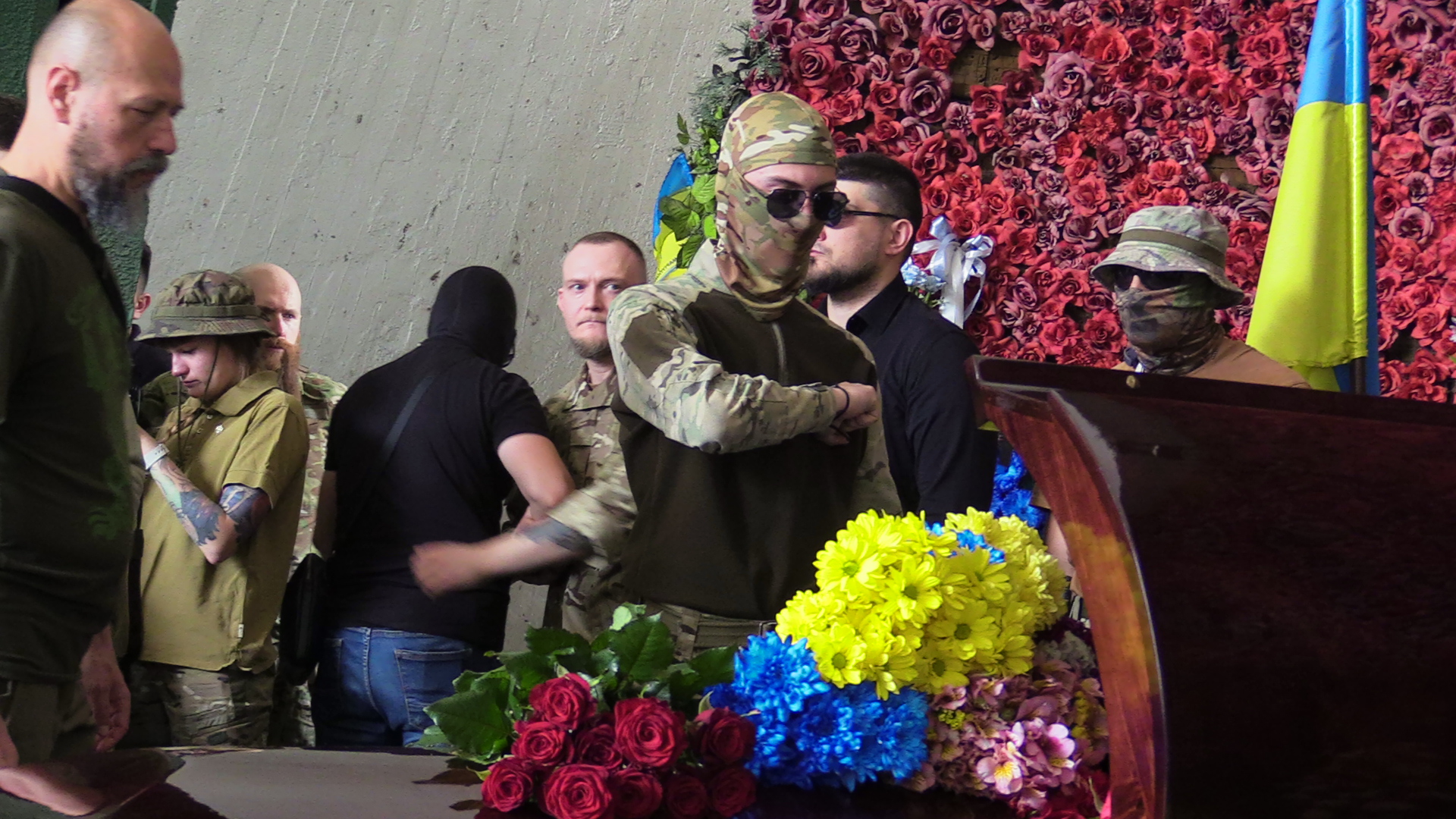
Kyiv, Ukraine – Standing next to the coffin with the body of Daniil Maznik, many of his camouflage-clad, battle-tested brothers-in-arms wept.
“He was a brave warrior, a pious Christian, a trustworthy comrade,” Denis Kapustin, Maznik’s commanding officer, said through tears during a farewell ceremony last weekend at the historic Baikove cemetery in Kyiv.
Maznik, a bearded and burly 29-year-old, was killed during one of the most audacious and brazen military operations of the continuing Russia-Ukraine war.
On June 1, he was part of four small military units that crossed into the western Russian region of Belgorod to attack Shebekino, a city of 40,000, and seize the village of Novaya Tavolzhanka.
They clashed with border guards and servicemen and were backed by Ukrainian drone attacks and heavy, indiscriminate artillery fire that included banned cluster munitions, Russian officials claimed.
As they moved forward, tens of thousands of civilians fled Belgorod in panic, and Novaya Tavolzhanka briefly became Russia’s first and only area Moscow did not control.
Maznik led the takeover of a border checkpoint, hijacked an armoured vehicle and captured a serviceman before being mowed down by gunfire on June 3, Kapustin said.
The farewell ceremony held inside a cavernous funeral parlour would have resembled thousands of similar rituals held throughout Ukraine in the past 16 months.
But some things made it look ominously different.
Some of the stern, gloomy men in uniforms wore carefully adjusted masks, hats and sunglasses to avoid being recognised.
None agreed to be interviewed by Al Jazeera, saying they had been “instructed” not to talk to the media.
And not a single Ukrainian official showed up to deliver a eulogy or put flowers on the coffin.
Because Maznik, whose nickname was Shaiba (Puck), was a Russian national and part of the Russian Volunteer Corps (RVC), a small military unit founded by fugitive ultranationalists.
They said they were backed by The Freedom of Russia Legion made up of Russian prisoners of war who switched sides, and groups of volunteers from neighbouring Poland and Belarus.

In February 2022, the Kremlin planned a triumphant blitzkrieg to topple Ukrainian President Volodymyr Zelenskyy’s government.
In the words of the Kremlin, the purpose of Russia’s “special military operation” was to “liberate” Ukraine from Zelenskyy’s “neo-Nazi junta”.
Back then, the very idea that the RVC and its allies would bring the war home to Russia during three raids – in March, late May and early June – would have seemed improbable.
By that measure, Kyiv could have used the raids to trumpet how faltering and feeble Moscow’s war effort is, and how Russian officials failed to protect border regions despite hefty defence budgets.
But it did not.
Instead, Kyiv considers the RVC an independent political force the Kremlin should negotiate with directly.
“We’re observing the course of hostilities and once again urge the Moscow regime to cease fire in the Belgorod region, immediately start talks with the RVC and stop meaningless bloodshed,” Zelenskyy’s aide Mykhailo Podolyak tweeted on June 5.
“This is a fight of the Russian Goliath against the Russian David,” he wrote, concluding that “Ukraine doesn’t take part in the conflict.”
Analysts say that Ukraine prefers to keep its backing of the RVC with intelligence information, artillery fire and drone attacks a secret – albeit an open one.
“Kyiv is distancing itself from the RVC’s raids into Russia because officially, Ukraine doesn’t wage any military offensive on Russian territory,” David Gendelman, an independent military analyst told Al Jazeera.
“Although everyone understands that no one would let them conduct such operations on their territory during a war, and in reality they are coordinated with Ukrainian intelligence,” he said.
To him, the controversial past of the RVC’s founders is not the reason why Ukraine is so reluctant to admit its backing of the unit.
“Kyiv would equally distance itself from them even if their past was not ultra-right but anything else – red, white or striped,” he said.
One of the reasons is Ukraine’s heavy reliance on Western aid; Western nations have repeatedly warned that the advanced weaponry they provide can only be used on Ukrainian territory.
But the RVC had at least four tactical vehicles that can withstand explosives and were supplied by the United States and Poland, as well as rifles made in Belgium and the Czech Republic, the Washington Post reported on June 3.
Two days later, Belgium said it objects to their use on Russian territory.
“There are extremely strict rules regarding Belgian and other European weapons,” Prime Minister Alexander De Croo told the Le Soir newspaper. “We asked the Ukrainians to explain the situation.”
Far-right ideologies
Killed RVC fighter Maznik spent years in the Russian military – and used his experience to “transform a small band of desperate Russian guys into a full-fledged military unit,” Kapustin said in his eulogy.
“Shaiba gave six years of his life to the Russian army, knew all the injustices and rot of this machine from inside and passionately fought against it next to us,” Kapustin said.
Russian media claimed that Maznik had been convicted of fraud in Moscow and fled to Ukraine, abandoning his wife and child.
His commander Kapustin, a 39-year-old with bulging muscles and several tattoos who prefers to be called White Rex, is far more outspoken.
Kapustin was born in Russia but spent his formative years in Germany, where he said he was a “street boy, a skinhead, smashed faces.”
He took part in and organised bare-knuckle boxing fights, and German police characterised him as “one of the most influential” far-right activists in Europe.
He moved back to Russia and then fled to Ukraine in 2017. Germany reportedly cancelled his residency permit.
In Kyiv, he opened The White Rex clothing store that sells attire with “Slavic solar symbols” that resemble swastikas and other insignia used in Nazi Germany.
These days, Kapustin is wanted in Russia for allegedly organising a failed assassination attempt on pro-Kremlin tycoon Konstantin Malofeev, whose Tsargrad television channel is one of the loudest pro-war media outlets.
Russian authorities also blacklisted the RVC as a “terrorist organisation” and arrested several men who tried to join it.
Earlier this month, Moscow police conducted three dozen searches of RVC’s alleged supporters, the SOTA news website reported.
Kapustin fanned the flames by saying the RVC wants to topple Russian President Vladimir Putin’s government.
“Russia’s collapse will allow us to return home,” he told a news conference in October. “We will facilitate the complete and absolute breakdown of Russia’s political order.”
His words and actions could become perfect fodder for Russia’s vocal supporters.
“I think it would be a sin [in Russia] not to use fully the far-right, radical background of the RVC’s creators,” Vyacheslav Likhachev, a Kyiv-based expert on far-right and ultranationalist groups, told Al Jazeera.
However, pro-war Russian commentators opted not to play this card – because the success of the RVC and its allies only underpins how unprepared Moscow’s armed forces and regional authorities are in dealing with their incursions.
“Most likely, it’s related to the unwillingness of Russian propagandists to attract attention to the fact that groups of Russian nationals don’t just wage a war against [the Kremlin] as part of Ukrainian armed forces, but are very successful in conducting independent operations on Russian territory,” Likhachev said.

World
Manhattan's Top Federal Prosecutor to Resign Ahead of Trump Inauguration
World
Russian forces capture former British soldier fighting for Ukraine in Kursk: report
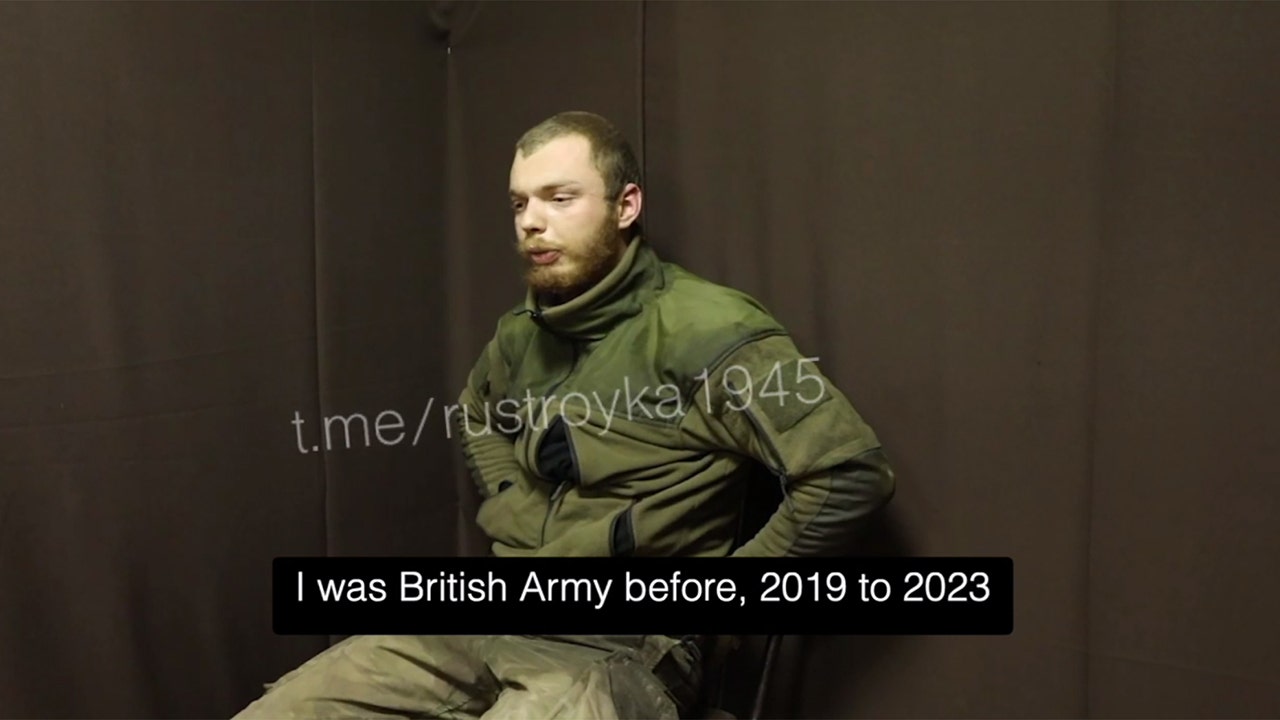
Russian forces captured a former British Army soldier who was fighting with Ukrainian troops in the Kursk region, according to reports on Monday.
In a video, the prisoner of war was sitting on a bench with his hand restrained as he identified himself as 22-year-old James Scott Rhys Anderson.
Russia’s Tass news agency reported on Monday that Russian security officials confirmed a British mercenary had been captured in the Kursk area.
“I was in the British Army before, from 2019 to 2023, 22 Signal Regiment,” Anderson told Russian authorities while being recorded. “Just a private. I was a signalman. One Signal Brigade, 22 Signal Regiment, 252 Squadron.”
RUSSIA TRICKS YEMENI MEN TO FIGHT IN UKRAINE UNDER HOUTHI SCHEME
Former British Army soldier James Scott Rhys Anderson was reportedly captured by Russian forces in the Kursk region while fighting for Ukraine. (Credit: East2West)
He expressed regret for joining Ukraine in its fight against Russia, explaining he had nearly lost everything.
When he left the military, he got fired from his job and applied on the International Legion (of Ukraine) webpage.
“I had just lost everything. I just lost my job. My dad was away in prison. I see it on the TV,” Anderson said while shaking his head. “It was a stupid idea.”
RUSSIA IS SUPPLYING HOUTHIS WITH SATELLITE DATA TO ATTACK SHIPS IN THE RED SEA: REPORT
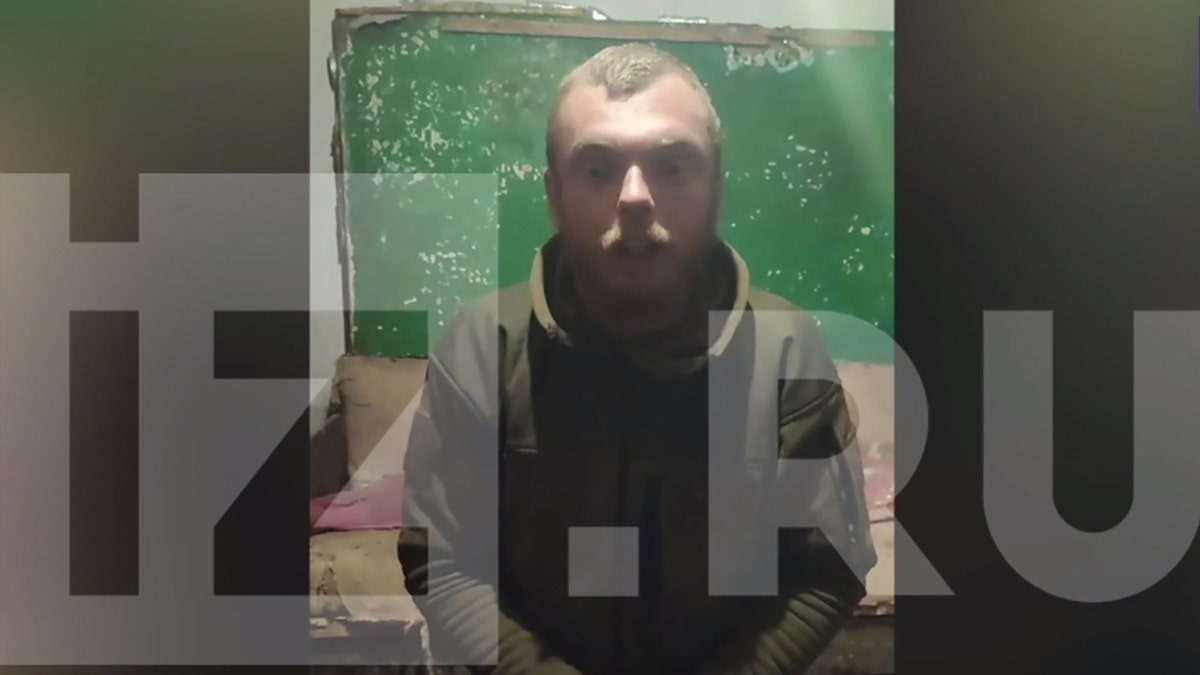
Former British Army soldier James Scott Rhys Anderson was reportedly captured by Russian forces in the Kursk region while fighting for Ukraine. (Credit: East2West)
The International Legion for Defense of Ukraine was created at the request of Ukrainian President Volodymyr Zelenskyy after Russia’s full-scale invasion of the country in February 2022.
The Associated Press reported that the Legion is a unit of Ukraine’s ground forces that mainly consists of foreign volunteers.
Anderson reportedly served as an instructor for Ukrainian troops and was deployed to the Kursk region against his will.
In the video, he said his commander took his stuff — passport, phone and other items — and ordered him to go to the Kursk region.
UKRAINE TO ANALYZE FRAGMENTS OF MISSILE FIRED BY RUSSIA CAPABLE OF CARRYING NUCLEAR WARHEADS

FILE PHOTO: Ukrainian servicemen hide from shelling, amid Russia’s attack on Ukraine, near the Russian border in Sumy region, Ukraine August 13, 2024. (REUTERS/Viacheslav Ratynskyi/File Photo)
“I don’t want to be here,” Anderson said.
The AP could not independently verify the report, but if confirmed, it said this could be one of the first publicly known cases of a Western national getting captured on Russian soil while fighting for Ukraine.
The U.K. Embassy in Moscow told the wire officials were “supporting the family of a British man following reports of his detention” though no other details were provided.
Anderson’s father, Scott Anderson, told Britain’s Daily Mail that his son’s Ukrainian commander informed him the young man had been captured.
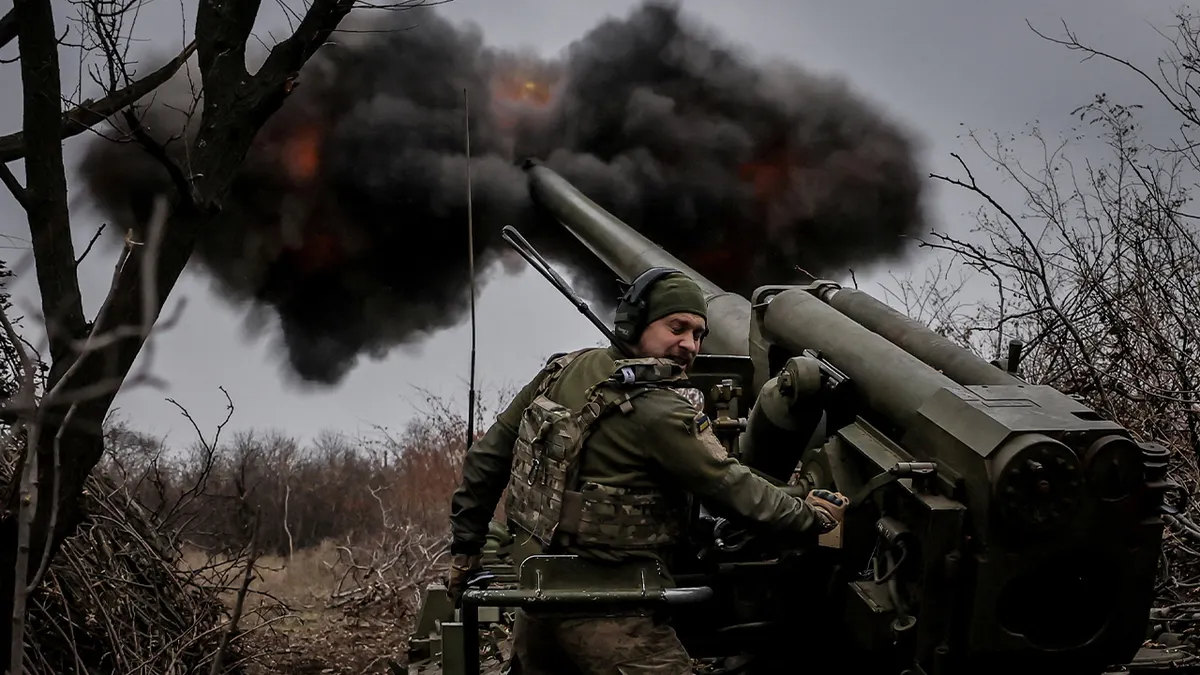
A serviceman of 24th Mechanized brigade named after King Danylo of the Ukrainian Armed Forces fires a 2s5 “Hyacinth-s” self-propelled howitzer towards Russian troops at a front line, amid Russia’s attack on Ukraine, near the town of Chasiv Yar in Donetsk region, Ukraine November 18, 2024. (Oleg Petrasiuk/Press Service of the 24th King Danylo Separate Mechanized Brigade of the Ukrainian Armed Forces/Handout via REUTERS )
The senior Anderson also said his son served in the British military for four years, worked as a police custody officer, and then went to Ukraine to fight. He told the paper he tried to convince his son not to join the Ukrainian military, and now fears for his safety.
“I’m hoping he’ll be used as a bargaining chip, but my son told me they torture their prisoners, and I’m so frightened he’ll be tortured,” he told Britain’s Daily Mail.
While being questioned, the younger Anderson talked about how he got to Ukraine from Britain, saying he flew to Krakow, Poland from London Luton. From there, he took a bus to Medyka in Poland, which is on the Ukrainian border.
Anderson’s capture comes amid reports Russia is recruiting hundreds of Yemeni men to fight in its war in Ukraine by luring them to Russia under false pretenses in coordination with the Houthi terrorist network, as reported by the Financial Times.
A senior Ukrainian defense official told Fox News that Moscow is trying to involve as many foreign mercenaries as possible in its war against Ukraine, whether from its allies or proxies in poor, impoverished countries.
The Ukrainian Ministry of Defense similarly confirmed the report to Fox News and said, “Russi[a] has escalated this war twice recently. First, when they brought North Korean fighters, and second, when they used [a] ballistic missile in Ukraine.”
Fox News Digital’s Caitlin McFall and Nana Sajaia, as well as The Associated Press contributed to this report.
World
German FM questions if DHL plane crash was 'hybrid incident'
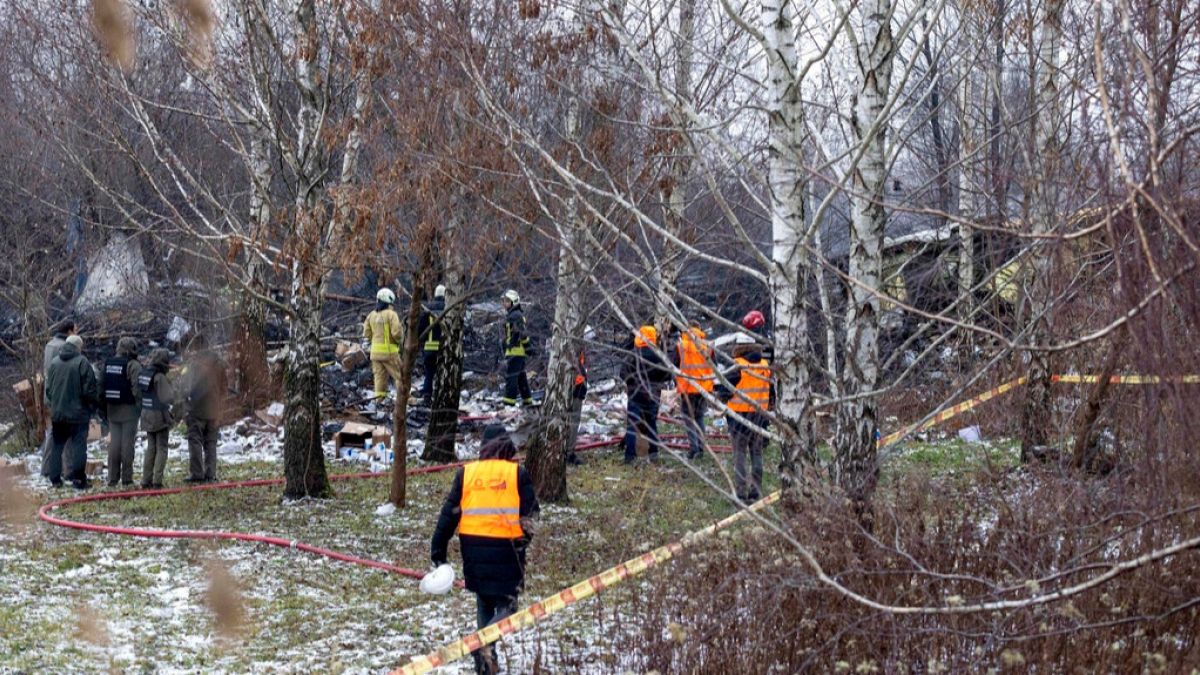
A cargo plane crashed into a house on its approach to Lithuania’s Vilnius Airport on Monday morning, killing one crew member and injuring others.
Authorities search for answers as they continue their investigation after a Boeing 737 cargo plane crashed into a house near Vilnius Airport in Lithuania on Monday morning.
The DHL cargo plane operated by Swiftair, departing from Leipzig in Germany, crashed while approaching the airport in Lithuania’s capital. A Spanish crew member was killed, and three other people on board were rushed to the hospital, one of them is in critical condition. No one on the ground was reportedly injured.
Speaking on the sidelines of the G7 Foreign Ministers’ meeting in Italy, Germany’s Foreign Minister Annalena Baerbock raised the question of whether the plane crash was a hybrid attack.
“We have to say at this point that we and our Lithuanian partners must now seriously ask ourselves whether this was an accident or, after last week, another hybrid incident. That shows what volatile times we are living in in the middle of Europe,” she said.
Lithuanian officials said one line of inquiry would examine Russian involvement but stressed that no evidence exists yet.
Last month, Western security officials warned that Russian military intelligence may be carrying out sabotage acts against nations in retaliation for their support to Ukraine.
Darius Jauniškis, the chief of Lithuania’s Intelligence, mirrored these concerns and said terrorism cannot be ruled out: “The State Security Department, together with the Department of Operational Services, have warned that these things are possible in the future. We see Russia becoming more aggressive.”
He added that however for now, “we really cannot make any attributions or point fingers at anyone, because there is no information about it.”
Lithuanian Defence Minister Laurynas Kasčiūnas said, “According to the information I have at the moment, I can say that there are no confirming facts that this was some kind of sabotage or terrorist incident. But the investigation will answer all the questions.”
The General Commissioner of the Lithuanian Police, Arūnas Paulauskas, chose not to speculate and said the cause of the crash might be the result of a technical failure or a human error. “But we are not aviation experts here to discuss this matter in such detail,” he added.
Paulauskas confirmed that investigators have visited the hospital, and will talk with the aircraft’s police and other aviation officials when they get the chance.
“As far as I know, the investigators have gone to the hospital. If there is an opportunity to communicate with the aircraft’s pilots to determine the initial causes, as well as with officials responsible for civil aviation.”
Experts say communication with Air Traffic Controller seemed ‘normal’
Several aviation experts who spoke to local media said they noticed nothing out of the ordinary when they listened to the communication between the crew and the Air Traffic Controller (ATC) that was shared online.
Aviation expert Vidas Kaupelis said it seemed there was “routine communication between the air traffic controller and the pilot”.
“They didn’t declare any emergency situation, they didn’t speak of any technical failures or fires,” the expert added.
The Chief of the Aircraft Accident and Incident Investigation under Ministry of Justice, Laurynas Naujokaitis, said German and Spanish investigators are due to arrive in Lithuania to assist local authorities with the probe.
“Currently we have an answer that a German safety probe institution is sending four investigators, Spain safety probe institution is sending two,” he said. “We are still gathering information regarding technical maintenance, meteorological, navigation and qualification information.”
-

 Business1 week ago
Business1 week agoColumn: Molly White's message for journalists going freelance — be ready for the pitfalls
-

 Science6 days ago
Science6 days agoTrump nominates Dr. Oz to head Medicare and Medicaid and help take on 'illness industrial complex'
-

 Politics1 week ago
Politics1 week agoTrump taps FCC member Brendan Carr to lead agency: 'Warrior for Free Speech'
-
/cdn.vox-cdn.com/uploads/chorus_asset/file/25739950/247386_Elon_Musk_Open_AI_CVirginia.jpg)
/cdn.vox-cdn.com/uploads/chorus_asset/file/25739950/247386_Elon_Musk_Open_AI_CVirginia.jpg) Technology1 week ago
Technology1 week agoInside Elon Musk’s messy breakup with OpenAI
-

 Lifestyle1 week ago
Lifestyle1 week agoSome in the U.S. farm industry are alarmed by Trump's embrace of RFK Jr. and tariffs
-

 World1 week ago
World1 week agoProtesters in Slovakia rally against Robert Fico’s populist government
-

 Health3 days ago
Health3 days agoHoliday gatherings can lead to stress eating: Try these 5 tips to control it
-

 News1 week ago
News1 week agoThey disagree about a lot, but these singers figure out how to stay in harmony
